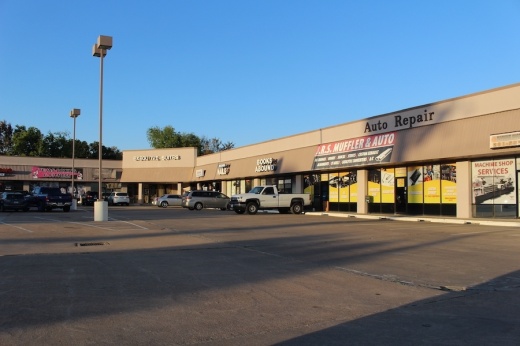According to the EPA, Superfund sites are locations where hazardous waste has been dumped or improperly disposed of, resulting in risks to human and environmental health. For residents of the area, this means the agency has found the area to be still contaminated in spite of efforts to rid the air, soil and groundwater of contaminants.
The contaminants were introduced to the area by Bell Dry Cleaners, which operated from 1984-2002 in the shopping center at 11600 Jones Road, Houston. The cleaners conducted improper disposal of dry-cleaning solvents, which then seeped into the soil and groundwater, contaminating both, the report's summary stated.
The EPA initiated its remedy program for the site in 2010, which involved the extraction and treatment of groundwater, activating microorganisms in the soil and water to work against contaminants and toxins, plugging and abandoning private water wells in the area, groundwater monitoring, sampling indoor air and allowing people in the affected area to connect to the city’s water supply.
These measures evolved in 2017 with the addition of soil vapor extraction, which started operating in the shallow soils and the deep unsaturated sands in the affected area. The agency stated these extractors will stay in operation until they reach the performance cleanup levels.
Reporting by Community Impact in 2019 found local nonprofit Texas Health and Environment Alliance said the site was considered unsafe despite business owners at the site saying they had no cause for concern.
According to the EPA, private water wells in the affected areas are still being used, which can expose users to contaminants and potentially result in adverse health effects. John Meyer, acting director of the Superfund and Emergency Management Division for EPA Region 6, recommended in the September report that actions be taken to limit exposure to the contaminated water within private wells that are still in use in the area. Meyer also recommended the agency find wells where contaminant concentrations exceed cleanup goals and evaluate the exposure pathway of vapors.
The THEA states on its website it is reviewing the EPA’s report and developing independent recommendations for limiting exposure that can be proposed to the EPA. Part of the group’s mission is to engage with the community in the affected area to raise awareness of the Superfund site and explain how exposure to soil and water in the affected water wells can harm people’s health.
Representatives from the organization will be set up at 12022 Jones Road, Houston, to engage with community members in the area Oct. 15. Their next action will involve door-to-door engagement with residents Oct. 21 and 28.
Those who are interested in getting involved with the THEA and their efforts on the Jones Road Superfund can visit the group’s webpage or email them at [email protected]. For more information on the Jones Road Superfund, follow this link.





